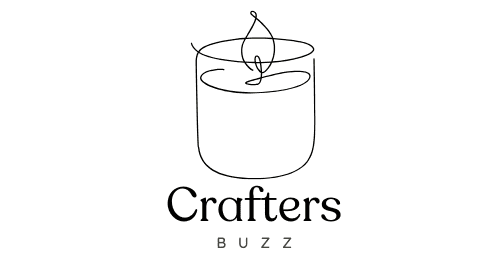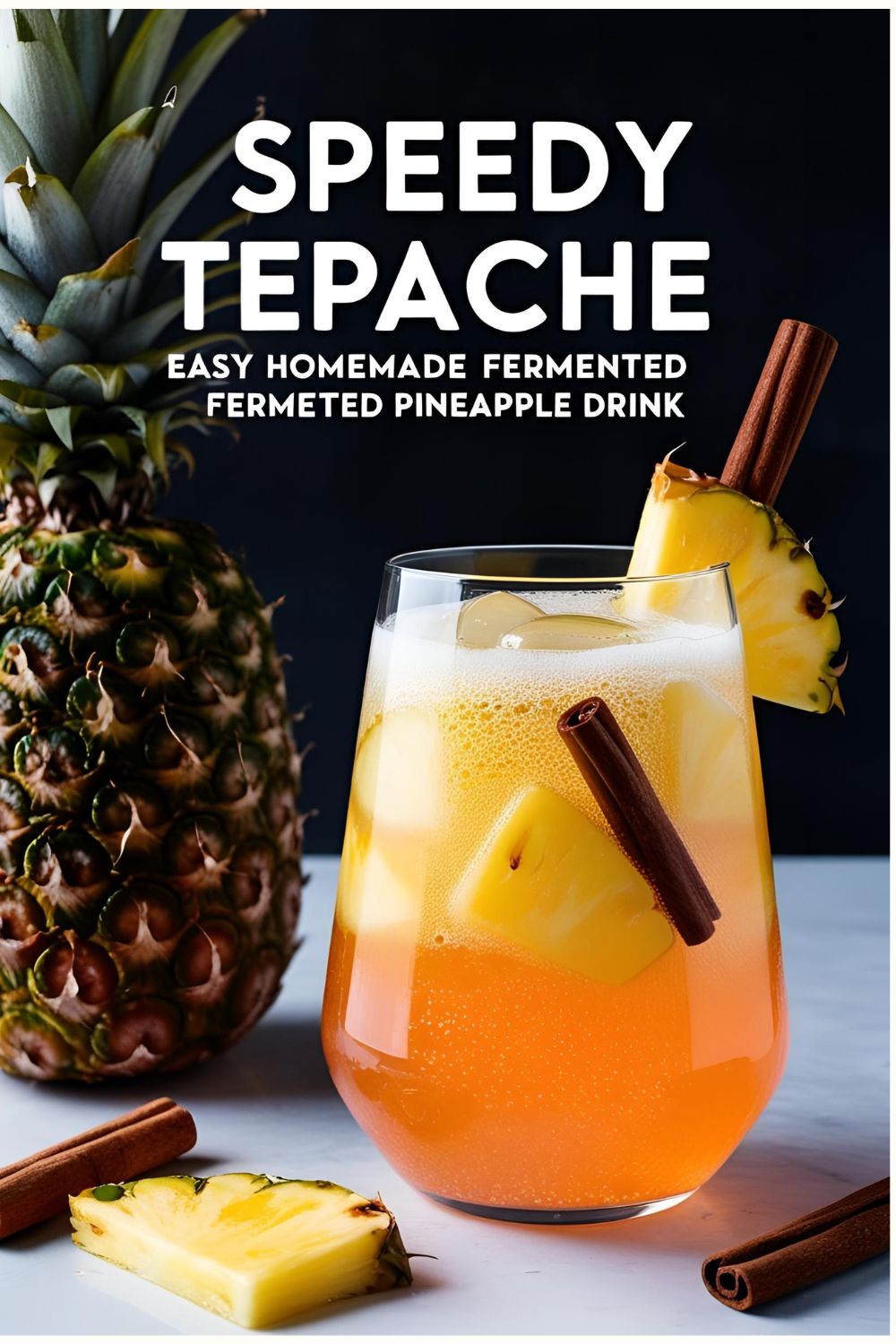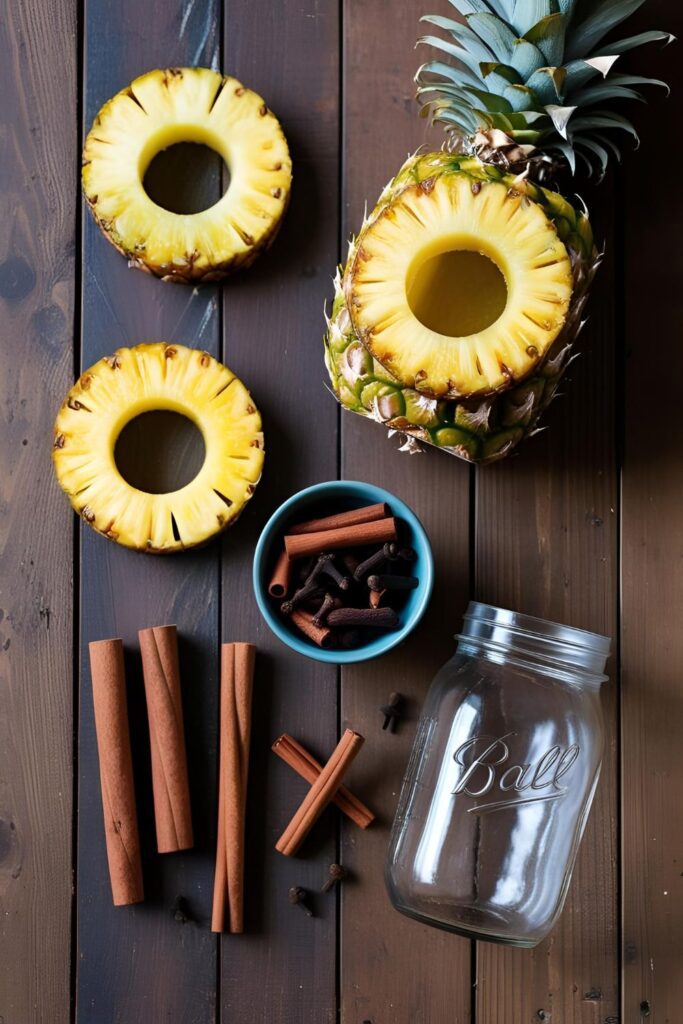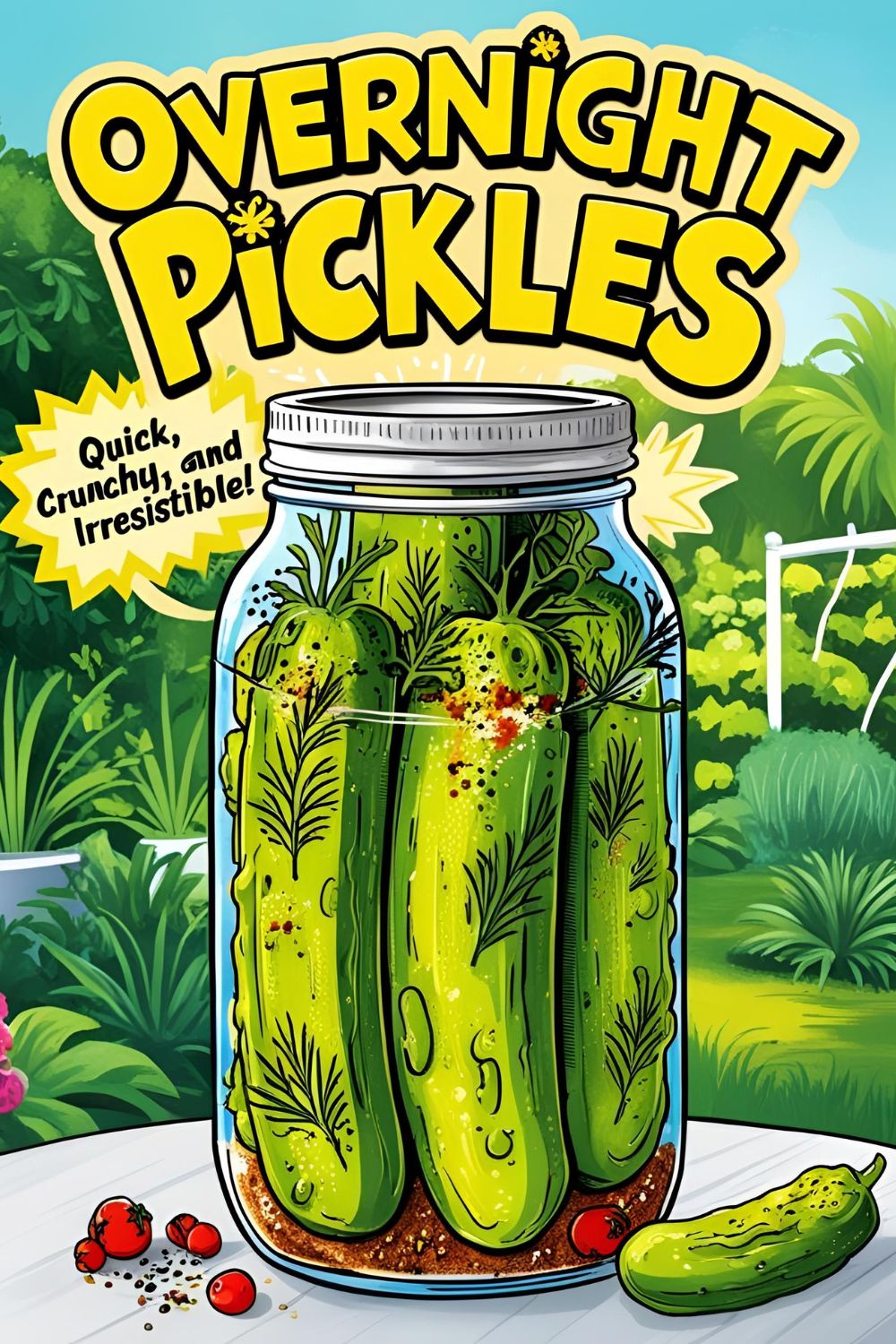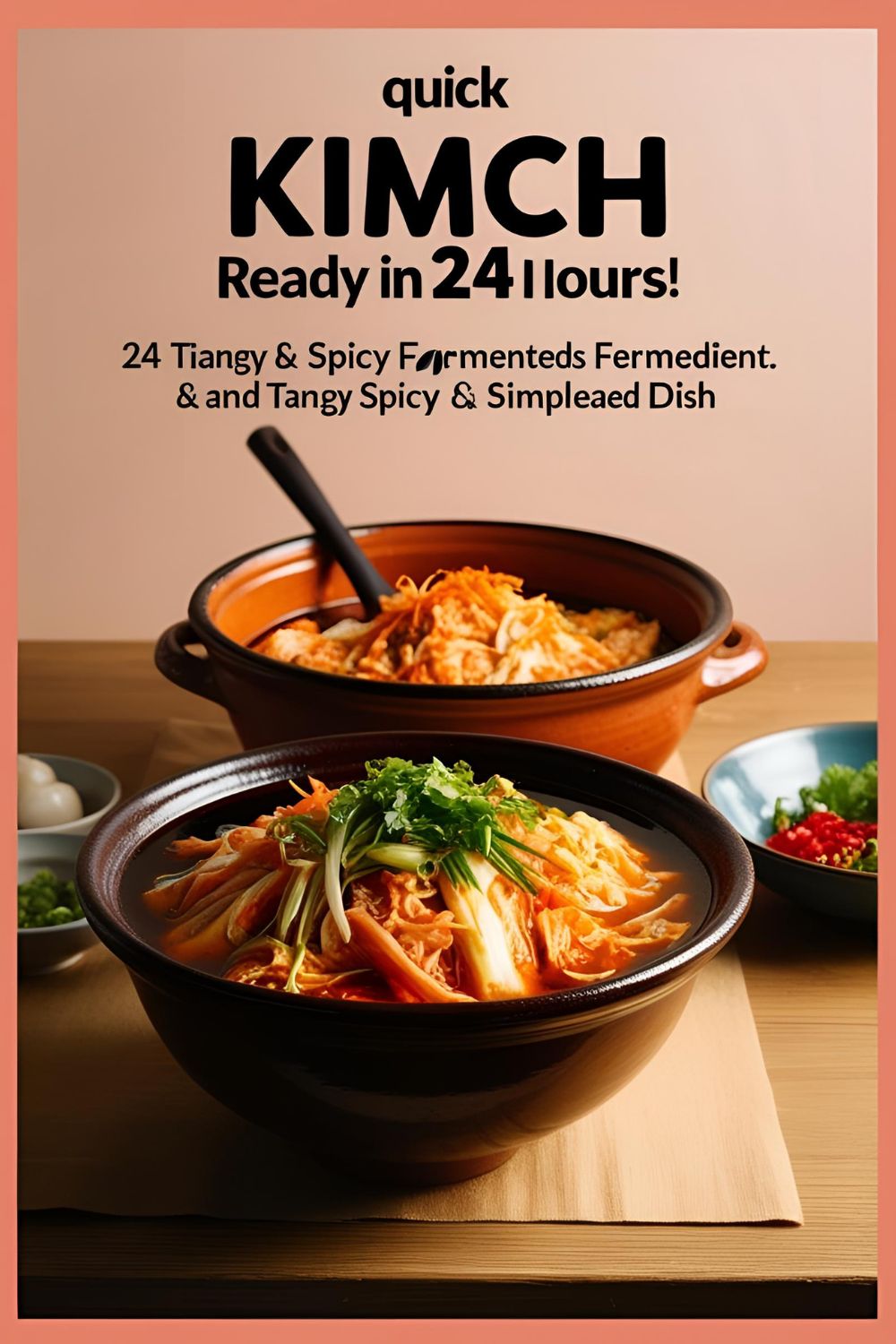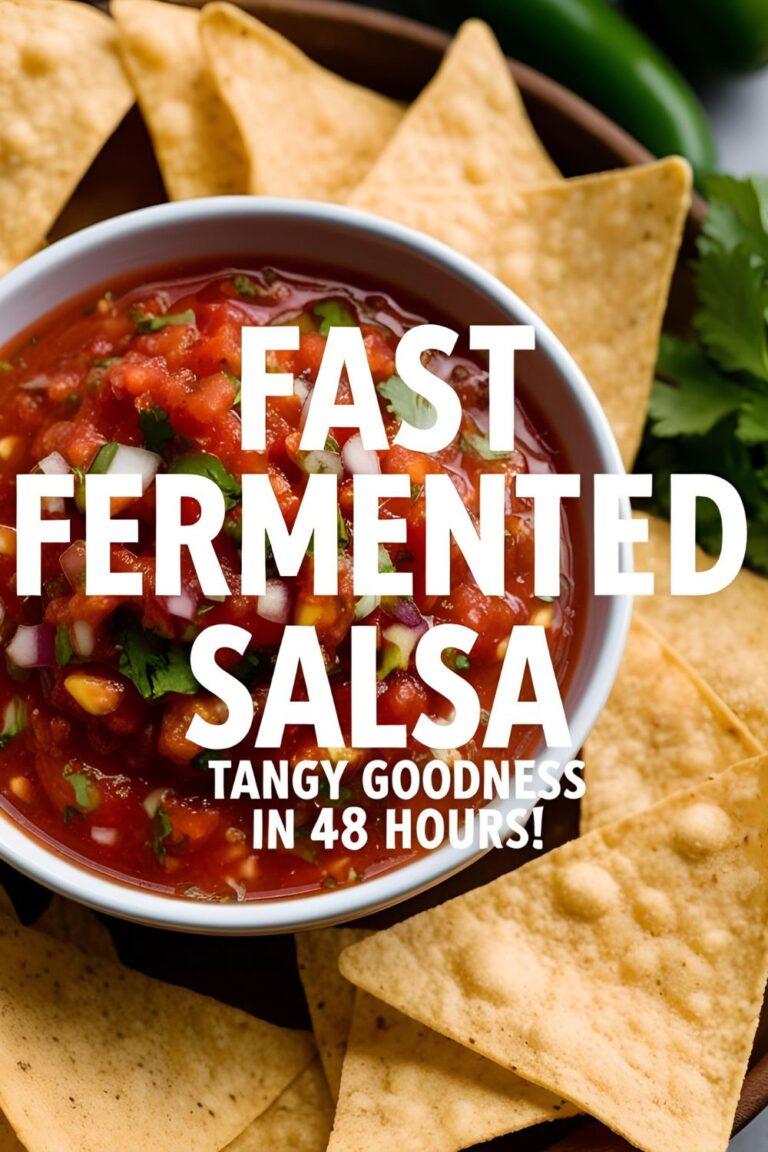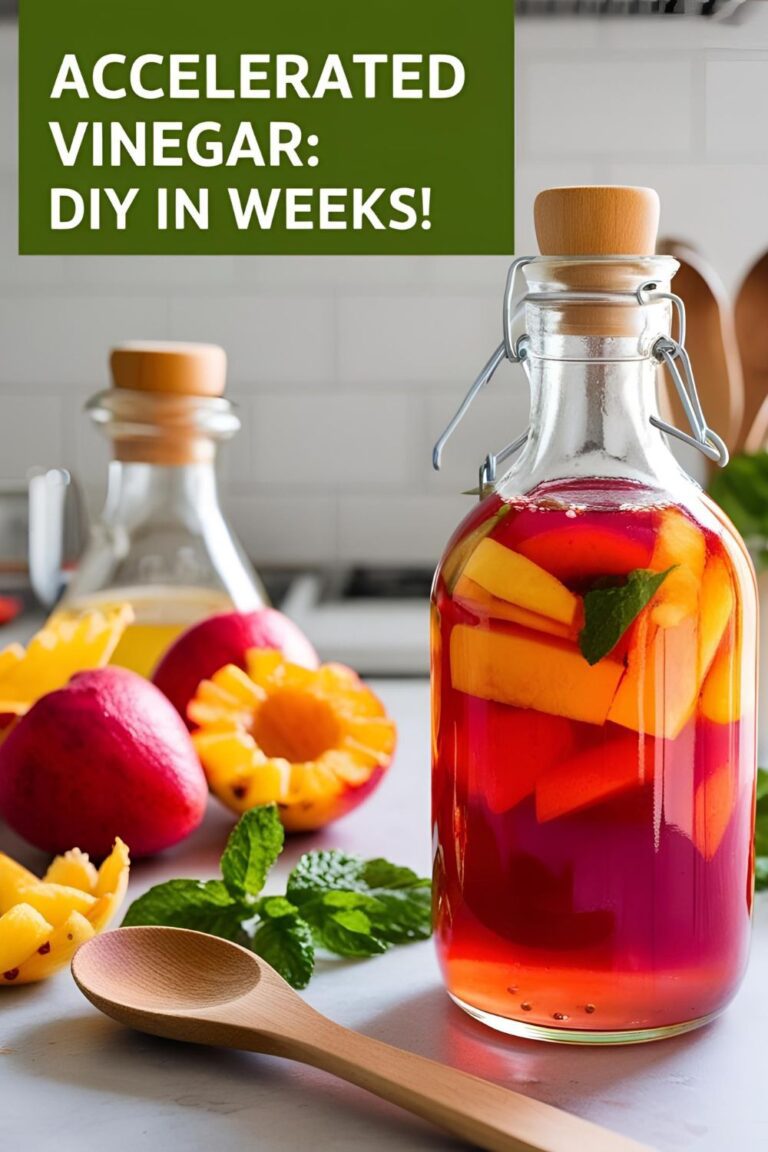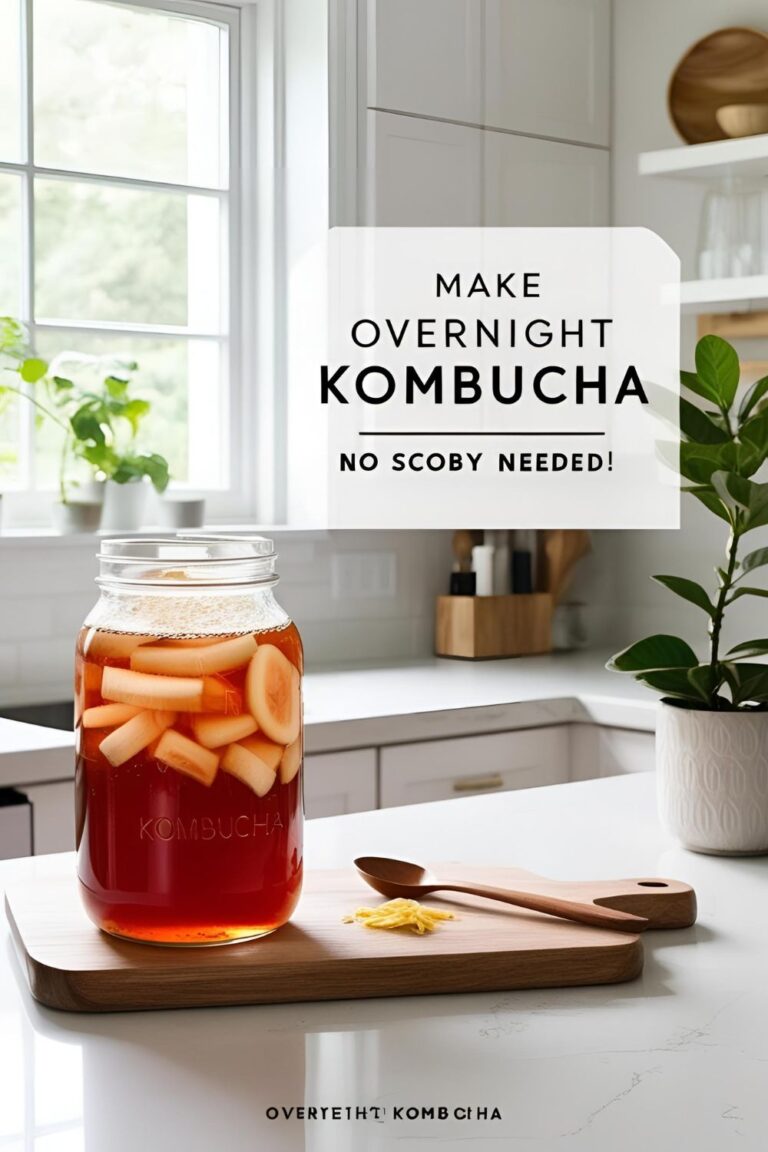Speedy Tepache: The Lazy Genius’s Guide to Fermented Pineapple Magic
Ever stared at a pineapple and thought, “You look delicious, but also like a lot of work”? Same. But what if I told you that your pineapple scraps—the stuff you usually toss—could transform into a fizzy, tropical, gut-friendly drink that tastes like summer in a glass? Enter Speedy Tepache, the Mexican fermented pineapple drink that’s part soda, part probiotic magic, and 100% worth the minimal effort.
Why Speedy Tepache Is Your New Favorite DIY Drink
Let’s be real: kombucha is great, but it’s also a commitment. Speedy Tepache, on the other hand, is like kombucha’s chill cousin who doesn’t need a SCOBY or a PhD in fermentation. It’s a low-alcohol (1–3% ABV) beverage that’s sweet, tangy, and slightly funky—think pineapple cider meets tropical soda.
Made from pineapple peels, brown sugar, and a few spices, it’s the ultimate zero-waste recipe. Plus, it ferments in just 2–3 days, so you won’t be waiting weeks to enjoy it. Serve it over ice, mix it with beer, or spike it with rum—your call.
🛒 Ingredients
- 1 large ripe pineapple (you’ll use the peel and core)
- ¾ cup piloncillo (or substitute with dark brown sugar, jaggery, or panela)
- 1 cinnamon stick
- 2 whole cloves
- 6 cups filtered water
Optional Add-ins:
- 1-inch piece of fresh ginger, sliced
- 1 star anise
- A few black peppercorns
🧰 Tools & Kitchen Gadgets
To make Speedy Tepache, you’ll need:
- 1-gallon wide-mouth glass jar – for fermentation
- Cheesecloth or clean kitchen towel – to cover the jar
- Large rubber band or string – to secure the cover
- Fine-mesh strainer – for straining the liquid
- Large bowl – to mix ingredients
- Measuring cups and spoons – for accuracy
- Cutting board and knife – for prepping the pineapple
Optional:
- Glass bottles with swing-top lids – for storing the finished tepache
👩🍳 Step-by-Step Instructions
- Prep the Pineapple: Wash the pineapple thoroughly to remove any dirt or pesticides. Cut off the crown and base, then peel the skin. Reserve the peel and core; save the flesh for another use (like snacking or making smoothies).
- Make the Sugar Syrup: In a pot, combine 2 cups of water and the piloncillo (or brown sugar). Add the cinnamon stick and cloves. Bring to a simmer, stirring until the sugar dissolves. Let it cool to room temperature.
- Combine Ingredients: Place the pineapple peels and core into the glass jar. Pour the cooled sugar syrup over them. Add the remaining 4 cups of water to the jar. If you’re using optional spices like ginger or star anise, add them now
- Cover and Ferment: Cover the jar with cheesecloth or a clean kitchen towel, securing it with a rubber band or string. Place the jar in a warm, dark spot (like a pantry or cupboard) and let it ferment for 48 to 72 hours. You’ll know it’s ready when you see bubbles and a slight foam on top.
- Strain and Bottle: Once fermented to your liking, strain the liquid through a fine-mesh strainer into a clean bowl, discarding the solids. Transfer the liquid to glass bottles, leaving about an inch of headspace.
- Optional Carbonation: If you prefer a fizzy drink, seal the bottles and let them sit at room temperature for another 12 to 24 hours to build carbonation. Be cautious and burp the bottles occasionally to prevent over-pressurization.
- Chill and Serve: Refrigerate the tepache to stop fermentation. Serve it chilled over ice, or mix it with beer or spirits for a refreshing cocktail.
🧾 Calories & Nutritional Info (Per 1-Cup Serving)
- Calories: Approximately 160–180
- Carbohydrates: ~40–45g
- Sugars: ~35–40g
- Fat: 0g
- Protein: 0g
- Vitamin C: ~25% DV
- Sodium: ~20mg
Note: Nutritional values may vary based on fermentation time and ingredients used.
❌ Common Mistakes to Avoid
- Using Unwashed Pineapple: Always wash the pineapple thoroughly to remove pesticides and dirt.
- Sealing the Jar Tightly: Fermentation produces gas. Sealing the jar can lead to pressure buildup and potential explosions.
- Over-Fermenting: Leaving the tepache to ferment too long can result in a sour, vinegary taste.
- Skipping the Sugar: Sugar is essential for fermentation. Don’t try to make a sugar-free version.
- Ignoring Temperature: Fermentation works best in a warm environment (around 75°F or 24°C).
🔄 Variations & Customizations
- Spicy Tepache: Add a sliced jalapeño or a pinch of chili flakes during fermentation for a kick.
- Berry Tepache: Include a handful of raspberries or blueberries for a fruity twist.
- Herbal Tepache: Add fresh mint or basil leaves for an aromatic flavor.
❓ FAQ Section
Q1: Can I use canned pineapple?
A1: It’s best to use fresh pineapple peels and core, as they contain natural yeasts essential for fermentation.
Q2: How long does tepache last?
A2: Stored in the refrigerator, tepache can last up to a week. Over time, it may become more sour.
Q3: Is tepache alcoholic?
A3: Tepache has a low alcohol content, typically between 1–3% ABV, depending on fermentation time.
Q4: Can I reuse the pineapple peels for a second batch?
A4: While some flavor remains, it’s recommended to use fresh peels for optimal taste and fermentation.
Q5: My tepache smells off. What should I do?
A5: If it smells rotten or moldy, discard it. A slightly sour or yeasty smell is normal.
Q6: Can I make tepache without spices?
A6: Yes, but spices like cinnamon and cloves add depth to the flavor.
Q7: How can I make my tepache fizzier?
A7: After bottling, let it sit at room temperature for 12–24 hours to build carbonation. Remember to burp the bottles to release excess gas.
🏁 Final Thoughts
There you have it—Speedy Tepache, the easiest way to dip your toes into the world of fermentation without buying a lab coat. It’s sustainable, delicious, and impressively easy to make. So next time you have a pineapple, don’t toss those peels. Turn them into a tropical, fizzy delight that’ll make you wonder why you ever bought soda in the first place.
